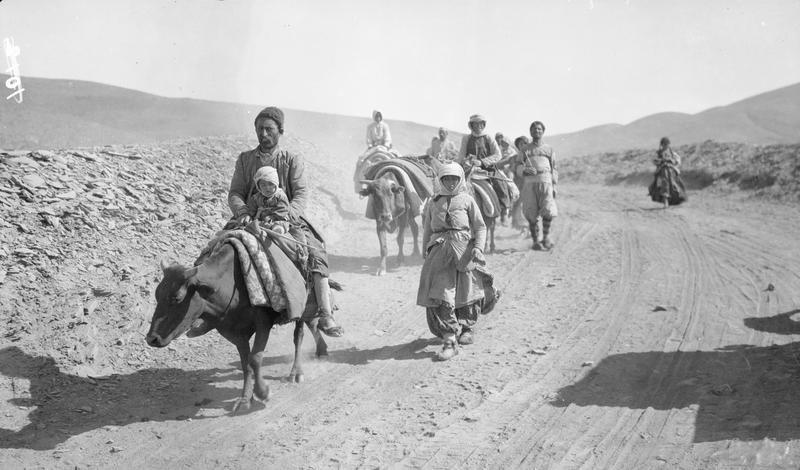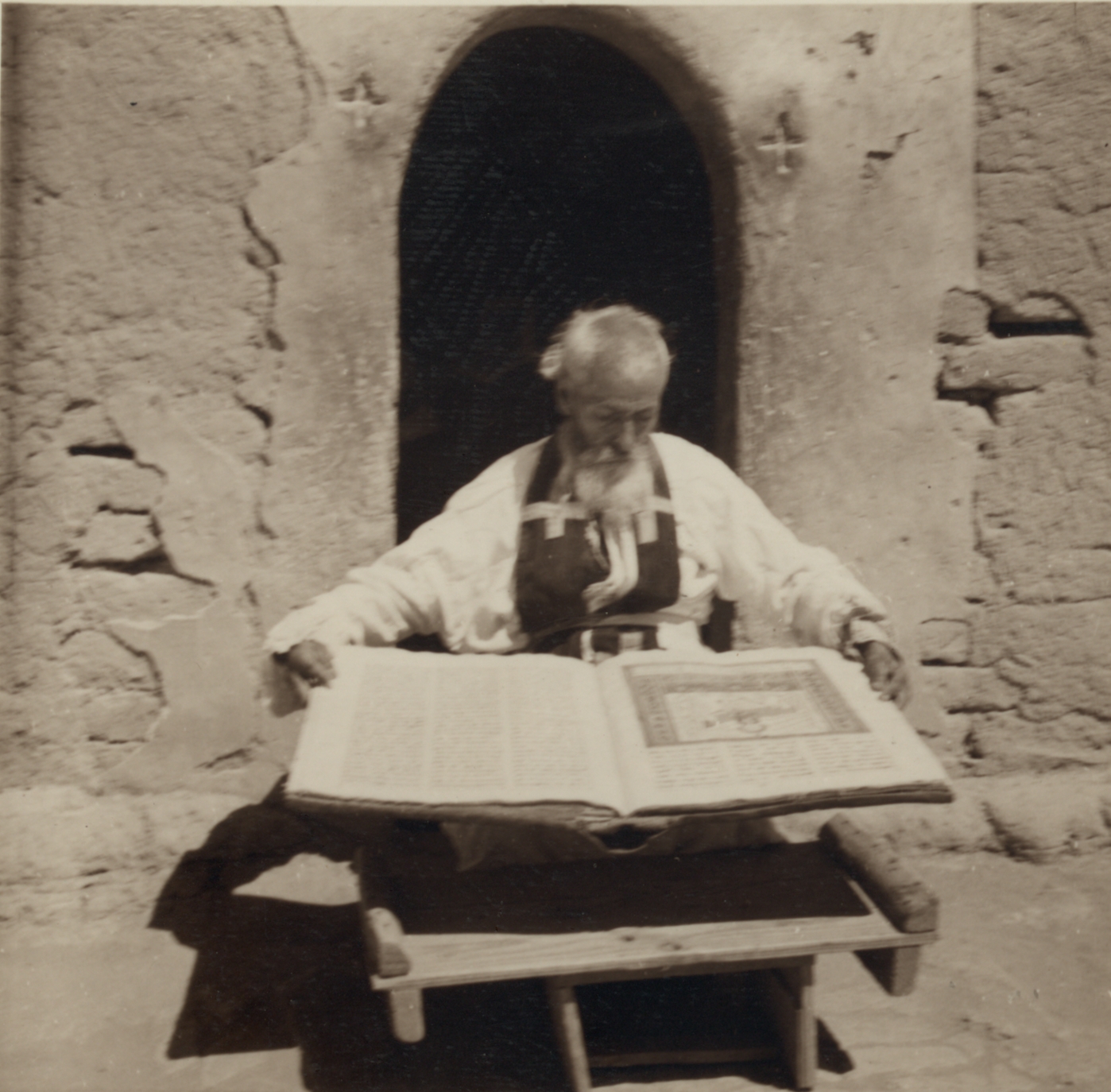|
Turkish Assyrians
Assyrians in Turkey ( tr, Türkiye Süryanileri, Syriac: ܣܘܪܝܝܐ ܕܛܘܪܩܝܐ) are an indigenous Semitic-speaking ethnic group and minority of Turkey who are Eastern Aramaic–speaking Christians, with most being members of the Syriac Orthodox Church, Chaldean Catholic Church, Assyrian Pentecostal Church, Assyrian Evangelical Church, or Ancient Church of the East. They share a common history and ethnic identity, rooted in shared linguistic, cultural and religious traditions, with Assyrians in Iraq, Assyrians in Iran and Assyrians in Syria, as well as with the Assyrian diaspora. Assyrians in such European countries as Sweden and Germany would usually be Turoyo-speakers or Western Assyrians, and tend to be originally from Turkey. The Assyrians were once a large ethnic minority in the Ottoman Empire, living in the Hakkari, Sirnak and Mardin provinces, but, following the Sayfo (1915, also known as the Assyrian genocide), most were murdered or forced to emigrate to join fel ... [...More Info...] [...Related Items...] OR: [Wikipedia] [Google] [Baidu] |
Tur Abdin
Tur Abdin ( syr, ܛܽܘܪ ܥܰܒ݂ܕܺܝܢ or ܛܘܼܪ ܥܲܒ݂ܕܝܼܢ, Ṭūr ʿAḇdīn) is a hilly region situated in southeast Turkey, including the eastern half of the Mardin Province, and Şırnak Province west of the Tigris, on the border with Syria and famed since Late Antiquity for its Christian monasteries on the border of the Roman Empire and the Sasanian Empire. The area is a low plateau in the Anti-Taurus Mountains stretching from Mardin in the west to the Tigris in the east and delimited by the Mesopotamian plains to the south. The Tur Abdin is populated by more than 80 villages and nearly 70 monastery buildings and was mostly Syriac Orthodox until the early 20th century. The earliest surviving Christian buildings date from the 6th century. In Late Antiquity, the area was part of the Roman Empire's province of Mesopotamia and an important centre of Roman Christianity, called in or . The Tur Abdin was fortified by the emperor Constantius II (), who constructed ... [...More Info...] [...Related Items...] OR: [Wikipedia] [Google] [Baidu] |
Ancient Church Of The East
The Ancient Church of the East is an Eastern Christian denomination. It branched from the Assyrian Church of the East in 1964, under the leadership of Mar Thoma Darmo (d. 1969). It is one of three Assyrian Churches that claim continuity with the historical Church of the East (the ancient Patriarchal Province of Seleucia-Ctesiphon), the others being the Assyrian Church of the East and the Chaldean Catholic Church. The Ancient Church of the East is headquartered in Baghdad, Iraq. From 1972 until his death in February 2022, the Church was headed by Catholicos-Patriarch Mar Addai II Giwargis. History The Ancient Church of the East began when in 1968 some members of the Assyrian Church of the East, then led by Shimun XXIII Eshai, left it and consecrated their own patriarch, Thoma Darmo. Darmo was strongly opposed to the system of hereditary succession of the position of patriarch of the Assyrian Church of the East, as well as its adoption of the Gregorian calendar "and other moder ... [...More Info...] [...Related Items...] OR: [Wikipedia] [Google] [Baidu] |
Western Europe
Western Europe is the western region of Europe. The region's countries and territories vary depending on context. The concept of "the West" appeared in Europe in juxtaposition to "the East" and originally applied to the ancient Mediterranean world, the Roman Empire (Western Roman Empire and Eastern Roman Empire), and medieval "Christendom" (Western Christianity and Eastern Christianity). Beginning with the Renaissance and the Age of Discovery, roughly from the 15th century, the concept of ''Europe'' as "the West" slowly became distinguished from and eventually replaced the dominant use of "Christendom" as the preferred endonym within the region. By the Age of Enlightenment and the Industrial Revolution, the concepts of "Eastern Europe" and "Western Europe" were more regularly used. Historical divisions Classical antiquity and medieval origins Prior to the Roman conquest, a large part of Western Europe had adopted the newly developed La Tène culture. As the Roman domain ... [...More Info...] [...Related Items...] OR: [Wikipedia] [Google] [Baidu] |
Iraqi Kurdistan
Iraqi Kurdistan or Southern Kurdistan ( ku, باشووری کوردستان, Başûrê Kurdistanê) refers to the Kurdish-populated part of northern Iraq. It is considered one of the four parts of "Kurdistan" in Western Asia, which also includes parts of southeastern Turkey (Northern Kurdistan), northern Syria (Western Kurdistan), and northwestern Iran (Eastern Kurdistan). Much of the geographical and cultural region of Iraqi Kurdistan is part of the Kurdistan Region (KRI), an autonomous region recognized by the Constitution of Iraq. As with the rest of Kurdistan, and unlike most of the rest of Iraq, the region is inland and mountainous. Etymology The exact origins of the name ''Kurd'' are unclear. The suffix ''-stan'' is an Iranian term for region. The literal translation for Kurdistan is "Region of Kurds". The name was also formerly spelled ''Curdistan''. One of the ancient names of Kurdistan is '' Corduene''.A.D. Lee, ''The Role of Hostages in Roman Diplomacy with Sa ... [...More Info...] [...Related Items...] OR: [Wikipedia] [Google] [Baidu] |
Sayfo
The Sayfo or the Seyfo (; see below), also known as the Assyrian genocide, was the mass slaughter and deportation of Assyrian / Syriac Christians in southeastern Anatolia and Persia's Azerbaijan province by Ottoman forces and some Kurdish tribes during World War I. The Assyrians were divided into mutually antagonistic churches, including the Syriac Orthodox Church, the Church of the East, and the Chaldean Catholic Church. Before World War I, they lived in mountainous and remote areas of the Ottoman Empire (some of which were effectively stateless). The empire's nineteenth-century centralization efforts led to increased violence and danger for the Assyrians. Mass killing of Assyrian civilians began during the Ottoman occupation of Azerbaijan from January to May 1915, during which massacres were committed by Ottoman forces and pro-Ottoman Kurds. In Bitlis province, Ottoman troops returning from Persia joined local Kurdish tribes to massacre the local Christian population (i ... [...More Info...] [...Related Items...] OR: [Wikipedia] [Google] [Baidu] |
Mardin Province
Mardin Province ( tr, Mardin ili; ku, Parêzgeha Mêrdînê; ar, محافظة ماردين) is a province of Turkey with a population of 809,719 in 2017, slightly down from the population of 835,173 in 2000. Kurds form the majority of the population, followed closely by Arabs who represent 40% of the province's population.Ayse Guc Isik, 201The Intercultural Engagement in Mardin Australian Catholic University. pp. 46–48. Demographics Mardin Province is considered part of Turkish Kurdistan and is populated by Kurds and Arabs who adhere to Shafi'i Islam. There is also a small Assyrian Christian population left. A recent study from 2013 has shown that 40% of Mardin Province's population identify as Arabs, and this proportion increases to 49% in the cities of Mardin and Midyat, where Arabs form the plurality. A 1996 study estimated that the population of Mardin Province as a whole was about 75% Kurdish in 1990. Social relations Social relations between Arabs and Kurds have hi ... [...More Info...] [...Related Items...] OR: [Wikipedia] [Google] [Baidu] |
Hakkari Province , a historical Kurdish emirate
{{DAB, geo ...
Hakkari or Hakkâri may refer to: *Hakkari (historical region), a historical region in modern-day Turkey and Iraq *Hakkâri (city), a city and the capital of Hakkâri Province, Turkey *Hakkâri Province, a province in southeast Turkey *Hakkari (electoral district), an electoral district Grand National Assembly of Turkey *Emirate of Hakkâri The Emirate of Hakkâri () was a Kurdish emirate centered around the city of Hakkâri, and to the west of Lake Urmia on the border with Iran, which ruled a wide variety of peoples. At the height of its power, the emirate controlled parts of Turk ... [...More Info...] [...Related Items...] OR: [Wikipedia] [Google] [Baidu] |
Ottoman Empire
The Ottoman Empire, * ; is an archaic version. The definite article forms and were synonymous * and el, Оθωμανική Αυτοκρατορία, Othōmanikē Avtokratoria, label=none * info page on book at Martin Luther University) // CITED: p. 36 (PDF p. 38/338) also known as the Turkish Empire, was an empire that controlled much of Southeast Europe, Western Asia, and Northern Africa between the 14th and early 20th centuries. It was founded at the end of the 13th century in northwestern Anatolia in the town of Söğüt (modern-day Bilecik Province) by the Turkoman tribal leader Osman I. After 1354, the Ottomans crossed into Europe and, with the conquest of the Balkans, the Ottoman beylik was transformed into a transcontinental empire. The Ottomans ended the Byzantine Empire with the conquest of Constantinople in 1453 by Mehmed the Conqueror. Under the reign of Suleiman the Magnificent, the Ottoman Empire marked the peak of its power and prosperity, as well a ... [...More Info...] [...Related Items...] OR: [Wikipedia] [Google] [Baidu] |
Assyrian Diaspora
Assyrian may refer to: * Assyrian people, the indigenous ethnic group of Mesopotamia. * Assyria, a major Mesopotamian kingdom and empire. ** Early Assyrian Period ** Old Assyrian Period ** Middle Assyrian Empire ** Neo-Assyrian Empire * Assyrian language (other) * Assyrian Church (other) * SS ''Assyrian'', several cargo ships * ''The Assyrian'' (novel), a novel by Nicholas Guild * The Assyrian (horse), winner of the 1883 Melbourne Cup See also * Assyria (other) * Syriac (other) * Assyrian homeland, a geographic and cultural region in Northern Mesopotamia traditionally inhabited by Assyrian people * Syriac language, a dialect of Middle Aramaic that is the minority language of Syrian Christians * Upper Mesopotamia Upper Mesopotamia is the name used for the Upland and lowland, uplands and great outwash plain of northwestern Iraq, northeastern Syria and southeastern Turkey, in the northern Middle East. Since the early Muslim conquests of the m ... [...More Info...] [...Related Items...] OR: [Wikipedia] [Google] [Baidu] |
Assyrians In Syria
Assyrians in Syria ( syr, ܐܬܘܪܝܐ ܕܣܘܪܝܐ, ar, الآشوريون في سوريا) are an ethnic and linguistic minority that are Indigenous peoples, indigenous to Upper Mesopotamia (known in Syriac as ''Gozarto'') which is the name used for the Upland and lowland, uplands and great outwash plain of northwestern Iraq, northeastern Syria and southeastern Turkey. Syrian-Assyrians are people of Assyrian people, Assyrian descent living in Syria, and those in the Assyrian diaspora who are of Syrian-Assyrian heritage. They live primarily in Al-Hasakah Governorate, with a significant presence in Hasakah city and the cities of Qamishli, Al-Malikiyah, Malikiyah, Ras al-Ayn, and Al-Qahtaniyah, al-Hasakah Governorate, Qahtaniyah, as well as in Tell Tamer and nearby villages. Some have migrated to Damascus and other western cities. They share a common history and Assyrian identity, ethnic identity, rooted in shared Syriac language, linguistic, Assyrian culture, cultural and Syriac ... [...More Info...] [...Related Items...] OR: [Wikipedia] [Google] [Baidu] |
Assyrians In Iran
Assyrians in Iran ( syr, ܐܬܘܪܝܐ ܕܐܝܼܪܵܢ), ( fa, آشوریان ایران), are an ethnic and linguistic minority in present-day Iran. The Assyrians of Iran speak Assyrian Neo-Aramaic, a neo-Aramaic language descended from Classical Syriac and elements of Akkadian, and are Eastern Rite Christians belonging mostly to the Assyrian Church of the East and also to the Ancient Church of the East, Assyrian Pentecostal Church, Chaldean Catholic Church and Assyrian Evangelical Church. They share a common history and ethnic identity, rooted in shared linguistic, cultural and religious traditions, with Assyrians in Iraq, Assyrians in Turkey and Assyrians in Syria, as well as with the Assyrian diaspora. The Assyrian community in Iran numbered approximately 200,000 prior to the Islamic Revolution of 1979. In 1987, there were an estimated 50,000 Assyrians living in Tehran. However, after the revolution many Assyrians left the country, primarily for the United States; the 199 ... [...More Info...] [...Related Items...] OR: [Wikipedia] [Google] [Baidu] |





